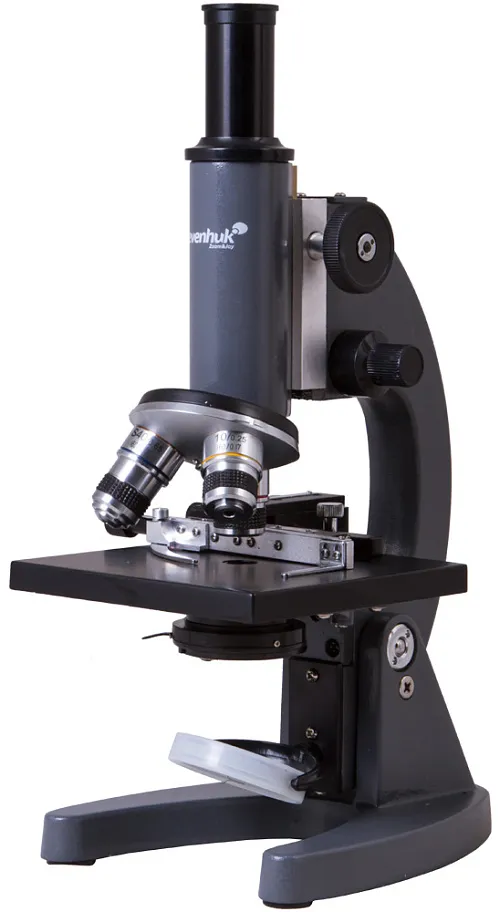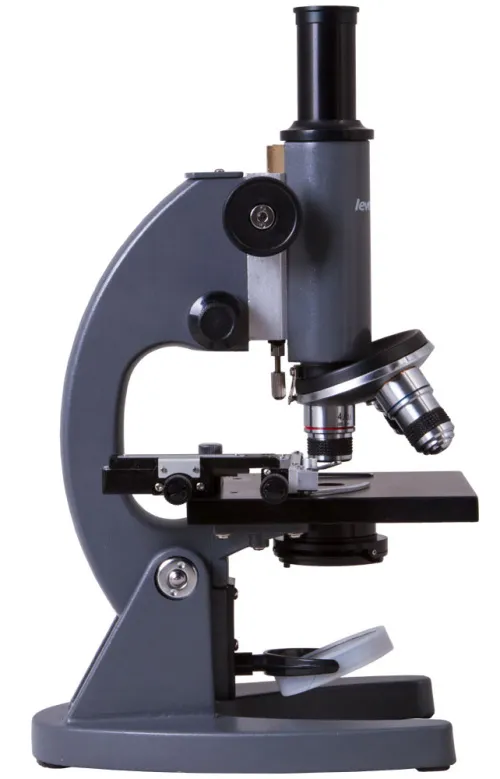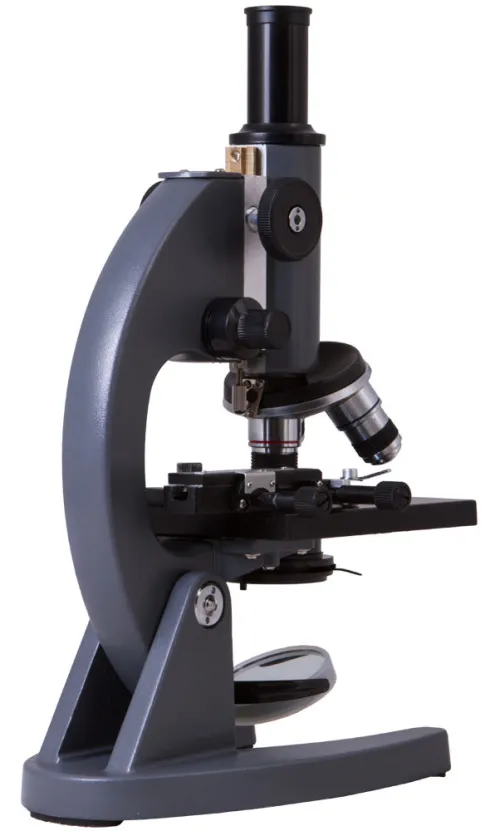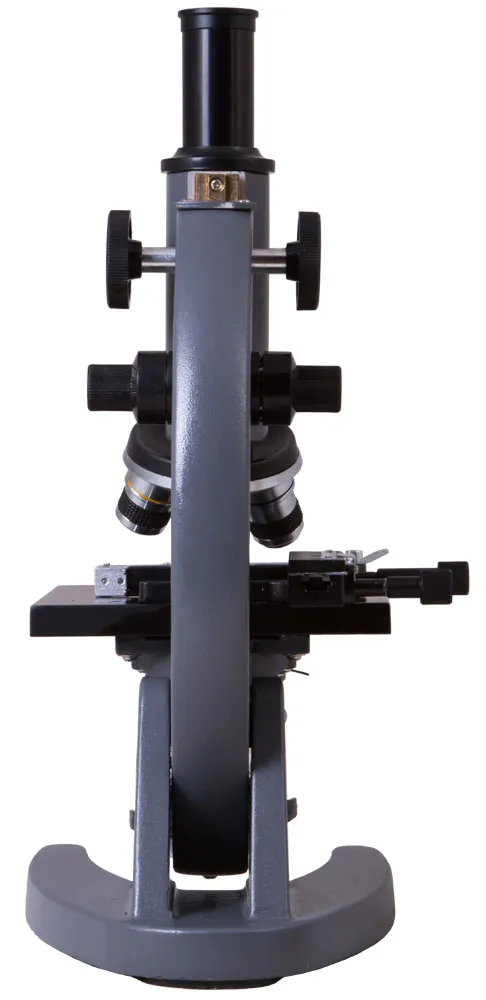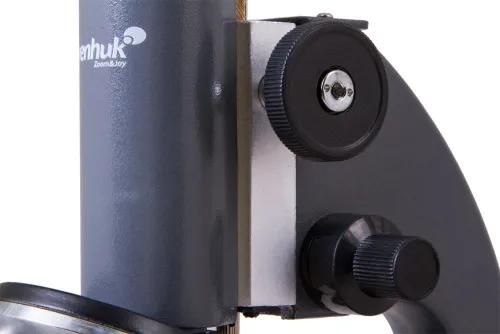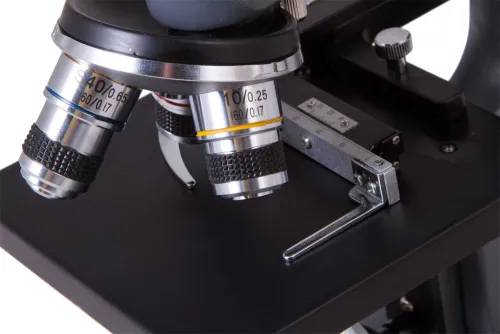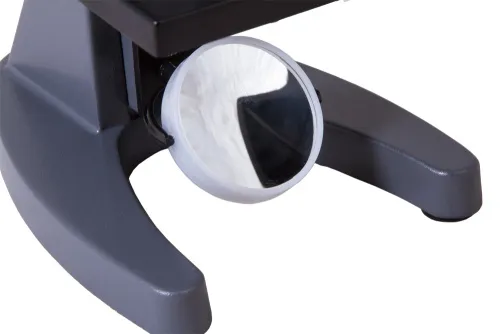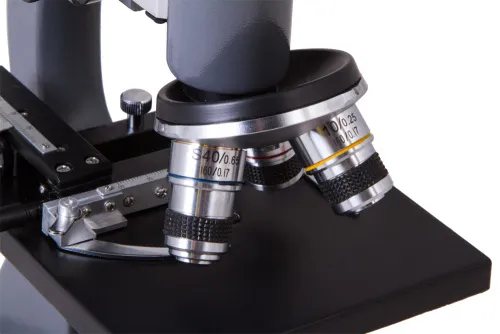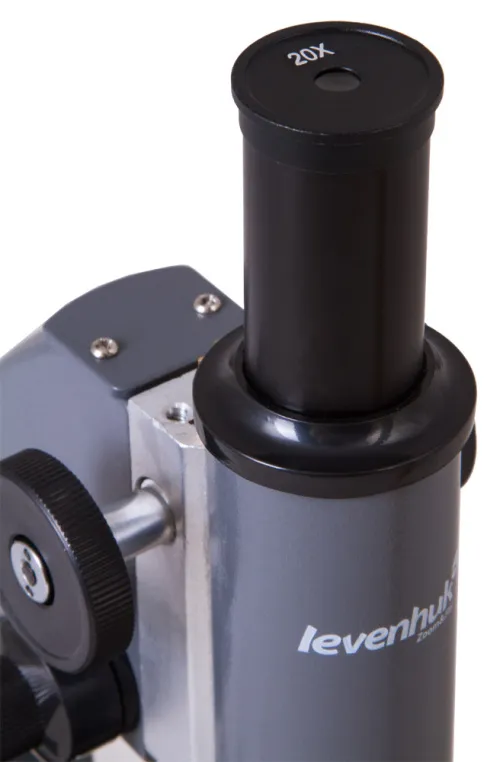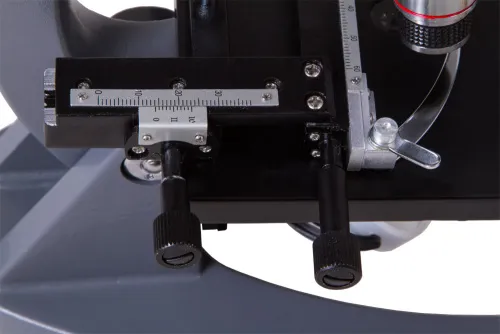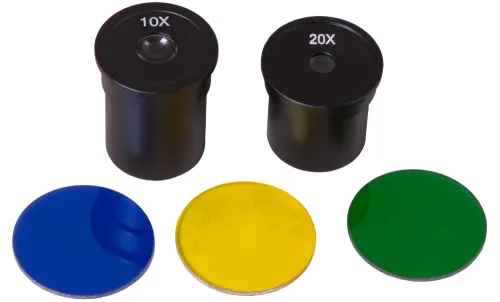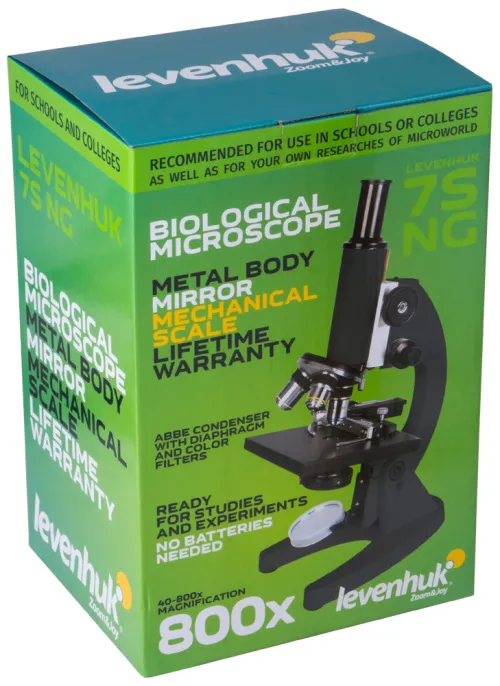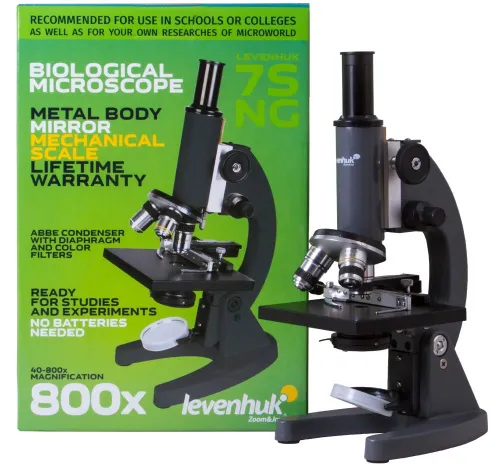Levenhuk 7S NG Monocular Microscope
Magnification: 40–800х. Abbe condenser, an iris diaphragm and light filters
| Product ID | 71917 |
| Brand | Levenhuk, Inc., USA |
| Warranty | lifetime |
| EAN | 5905555004280 |
| Package size (LxWxH) | 25x20x36 cm |
| Shipping Weight | 3 kg |
Levenhuk 7S NG Microscope is designed especially for school children and kids interested in science. A reliable and easy-to-operate optical tool allows for exploring the micro world at 800x magnification. This magnification is sufficient for performing entertaining biological experiments, observing one-celled organisms, and detailed studying of the prepared microscope slides.
The microscope contains a classical illumination system that consists of an Abbe condenser, an iris diaphragm and light filters. The illuminator is a mirror placed under the stage. This design does not require AC supply, and that makes the optical tool safer, especially for children.
The optical scheme of Levenhuk 7S NG consists of a triple-cavity revolving nosepiece, installed objective lenses with different magnification and two eyepieces. The last ones are installed in the eyepiece tube and allow for adjusting the magnification and field of view of the microscope. The microscope slides are placed on the stage. It is equipped with a mechanical scale that allows for moving the microscope slides along two axes – X-axis (left-right) and Y-axis (forwards-backwards). The fine and coarse focusing knobs are used for sharpness adjustment.
The microscope body is made of metal. It is sturdy, reliable and durable.
Features:
- Microscope for studies and hobby
- Sturdy metal body
- Simple and durable design
- All-glass optics
- Revolving nosepiece for three objective lenses
- Abbe condenser with an iris diaphragm
- Three light filters (blue, green, yellow)
- Mechanical stage
- Mirror illumination that does not require AC supply
The kit includes:
- Microscope
- Objective lenses: 4x, 10x, 40x
- Eyepieces: 10x, 20x
- User manual and lifetime warranty
Levenhuk 7S NG Microscope is compatible with Levenhuk digital cameras (purchased separately). Levenhuk cameras are installed in the eyepiece tube instead of an eyepiece.
| Product ID | 71917 |
| Brand | Levenhuk, Inc., USA |
| Warranty | lifetime |
| EAN | 5905555004280 |
| Package size (LxWxH) | 25x20x36 cm |
| Shipping Weight | 3 kg |
| Type | biological, light/optical |
| Microscope head type | monocular |
| Optics material | optical glass |
| Head | fixed (non-rotatable) |
| Head inclination angle | not angled |
| Magnification, x | 40 — 800 |
| Eyepiece tube diameter, mm | 23.2 |
| Eyepieces | 10x, 20x |
| Objectives | 4x, 10x, 40xs (spring) |
| Revolving nosepiece | for 3 objectives |
| Stage, mm | 120x120 |
| Stage moving range, mm | fixed |
| Stage features | with a mechanical stage |
| Condenser | Abbe N.A. 0.65 |
| Diaphragm | iris |
| Focus | coarse (50mm) and fine (1.8–2.2mm) |
| Body | metal |
| Illumination | mirror |
| Light filters | blue, green, yellow |
| User level | beginners |
| Assembly and installation difficulty level | easy |
| Application | school/educational |
| Illumination location | lower |
| Research method | bright field |
We have gathered answers to the most frequently asked questions to help you sort things out
Find out why studying eyes under a microscope is entertaining; how insects’ and arachnids’ eyes differ and what the best way is to observe such an interesting specimen
Read this review to learn how to observe human hair, what different hair looks like under a microscope and what magnification is required for observations
Learn what a numerical aperture is and how to choose a suitable objective lens for your microscope here
Learn what a spider looks like under microscope, when the best time is to take photos of it, how to study it properly at magnification and more interesting facts about observing insects and arachnids
This review for beginner explorers of the micro world introduces you to the optical, illuminating and mechanical parts of a microscope and their functions
Short article about Paramecium caudatum - a microorganism that is interesting to observe through any microscope

